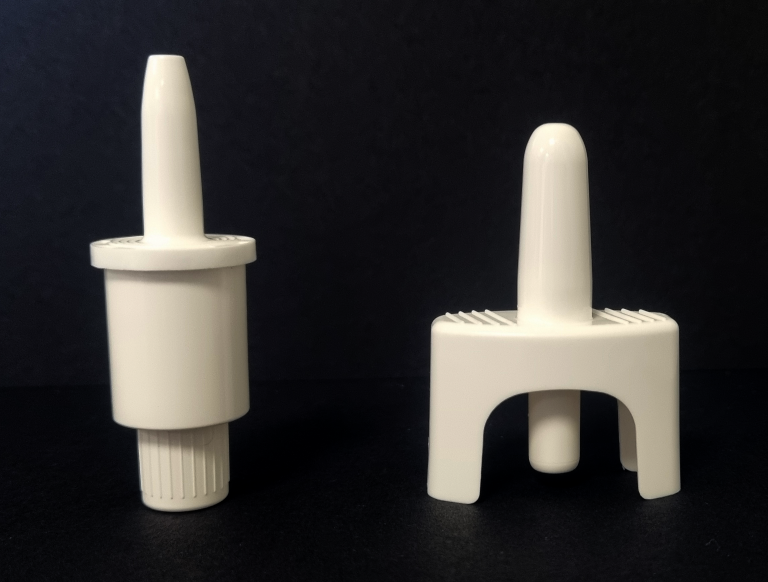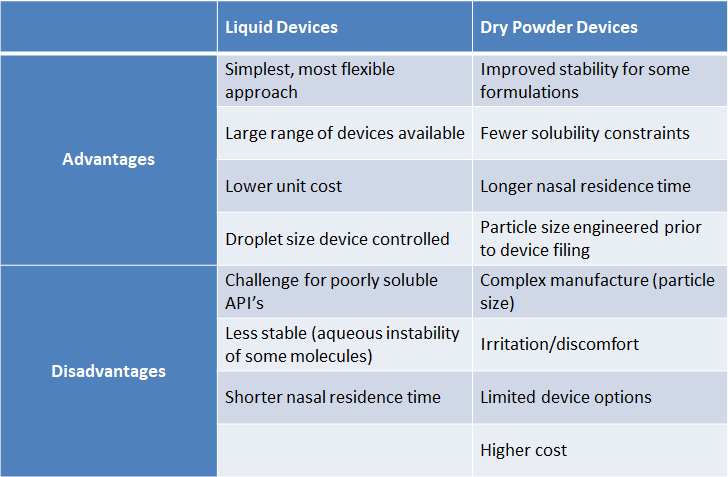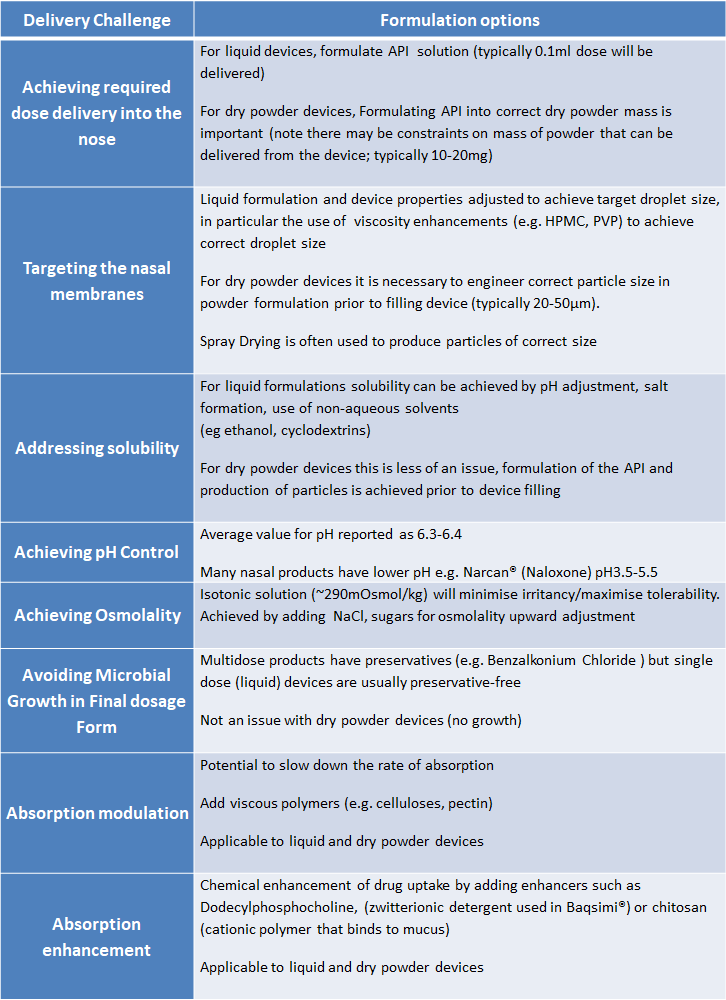News
25th March 2021 – Formulation Options in Nasal Drug Delivery
The anatomy and physiology of the nasal cavity creates a number of unique opportunities for the successful delivery of drugs and vaccines. This can be locally, systemically or directly to the central nervous system. This utility has resulted in growing interest from scientists looking to administer both therapeutic agents and vaccines via the nasal delivery route. This interest has been fuelled by a number of factors, not least the surge in interest in delivering Covid-19 prophylactic treatments and vaccines to the nasal cavity, the site of first infection.
In our first article we looked at the basic anatomy of the nasal cavity, and considered why it was such a good target for delivering a wide range of therapeutics and vaccines.
In this, our second article, we will consider some of the formulation choices that need to be taken into account when developing dosage forms for delivering therapeutics and vaccines via the nasal route.
Liquid or Dry Powder Delivery?
When considering options for nasal delivery of a drug or vaccine, the first decision is usually choice of device type. The options are to deliver the active either in a liquid/solution (as either multidose or single dose unit) or as a dry powder (generally single dose devices).

Aptar Pharma’s Unidose (UDS) systems
Liquid nasal dosage forms are the most prevalent and offer the simplest and most flexible formulation approach. There are a wide range of device options available which can be purchased relatively inexpensively. The filling of API formulations into liquid devices is easier in comparison to powder, and liquid devices also offer the option of either a unit-dose or multi-dose delivery.
With liquid devices, the droplet size emitted is dictated by the properties of the liquid formulation (viscosity) combined with the performance of the device itself.
In contrast, dry powder devices require formulation techniques (such as spray drying) to engineer the correct particle size required for nasal delivery. This particle size is generally agreed to be in the region of 10-50µm with a requirement to minimise small respirable particles (below 10µm) to avoid the potential of particles being inhaled into the lungs.
Dry powder delivery devices are of growing interest and offer some unique differences to liquid delivery systems. For example, dry powder formulations are particularly useful in the formulation and delivery of molecules that are relatively unstable in solution (e.g. peptides, proteins) but can be stabilised and delivered in the dry powder form. They dissolve on the membrane surface of the turbinates, with release of the active ingredients for either local or systemic delivery.
Generally, dry powder devices are single dose use and tend to be more expensive than their liquid counterparts. A recent example is the delivery of dry powder glucagon to treat very low blood sugar (hypogycemia). This dry powder single dose rescue treatment, Eli Lilly’s BAQSIMI®, received FDA approval in 2019 as a dry powder spray in a portable, single-use, ready-to-use device.
Table 1: Advantages and disadvantages of dry powder and liquid nasal devices

Formulation Development: Considerations and Options
For both liquid and dry powder formulations there are challenges and opportunities that can be exploited, when developing a formulation, to achieve the target product profile for the drug or vaccine being delivered.
Ideally formulators will want to choose excipients that are listed in the FDA Inactive Ingredients Database for nasal delivered products. However, the list is relatively small and other excipients can be used, although additional toxicology information will be required as part of an IMP/IND/CTD submission.
Some of the formulation considerations are summarised below and for each challenge, formulation options for overcoming the challenge are suggested :
Table 2: Delivery Considerations and Formulation Options

In conclusion, there are many factors to consider when developing therapeutics and vaccines for nasal delivery, both in regard to optimising the formulations themselves and the devices through which they are delivered.
Once the choice between liquid or dry powder devices has been made, there are number of particle engineering and excipient options that can be utilised by formulators to achieve the desired product performance attributes needed for successful delivery and release/absorption in the nasal cavity.
Next Time….
Our third article will consider some of the regulatory hurdles that practitioners face when taking a new formulation into the clinic, with a particular focus on the analytical techniques and development steps necessary to support a successful regulatory submission.
To register for this and future newsletters please visit the Upperton website or contact us here

